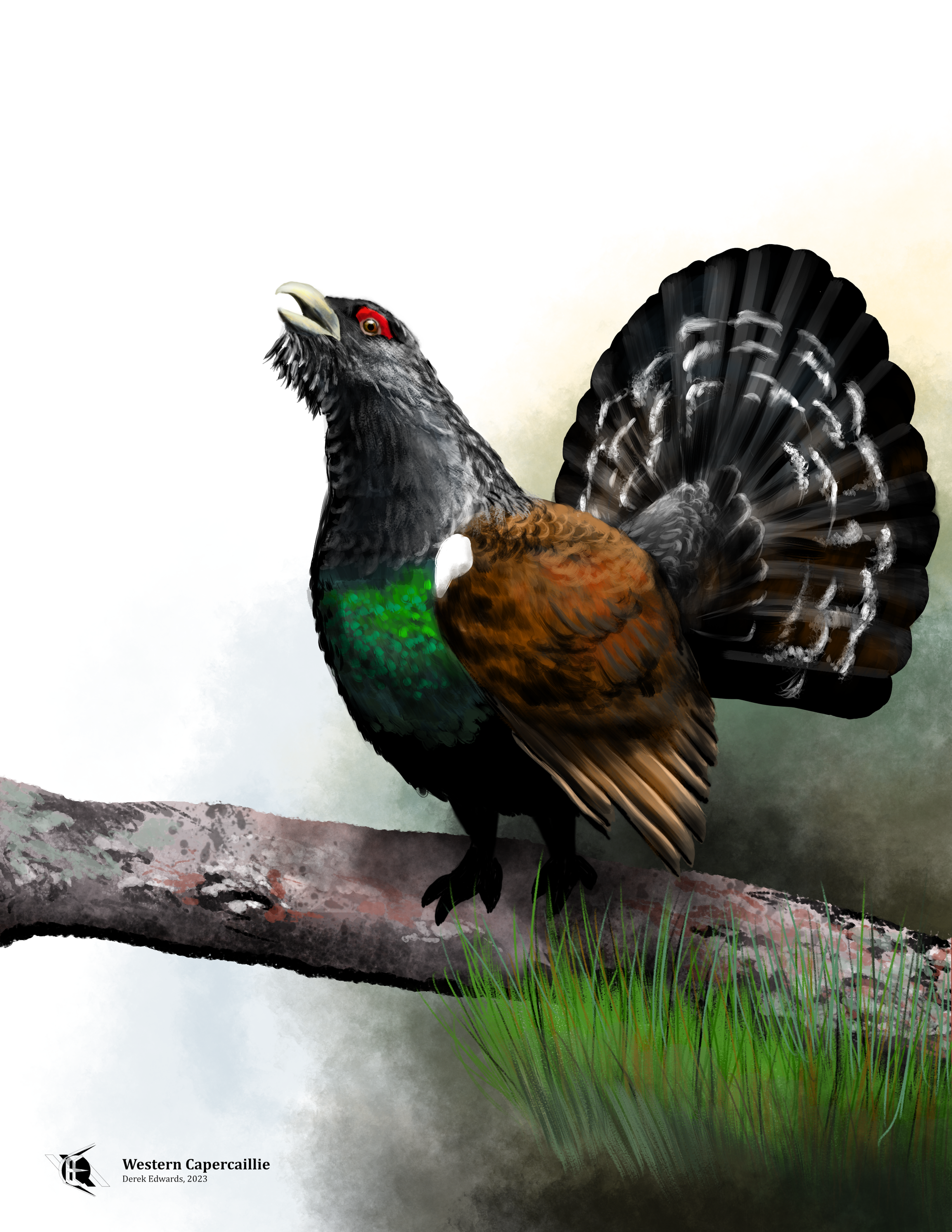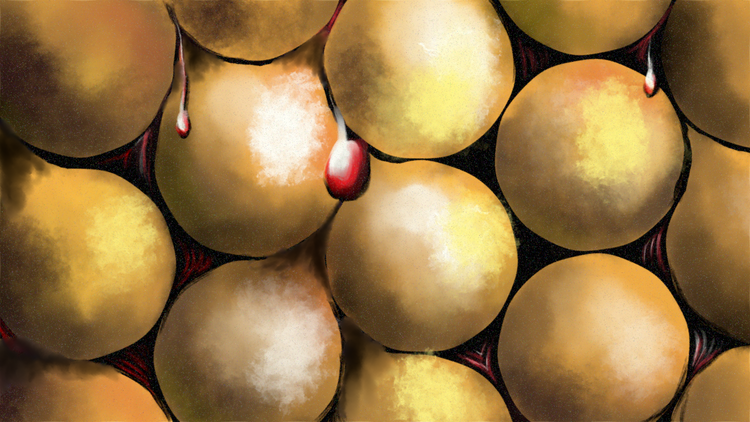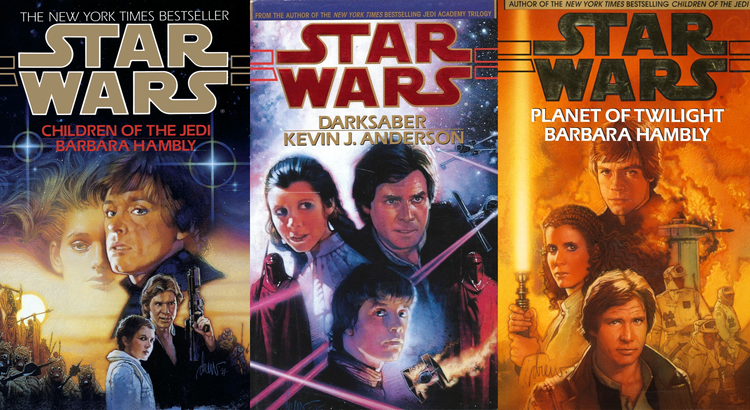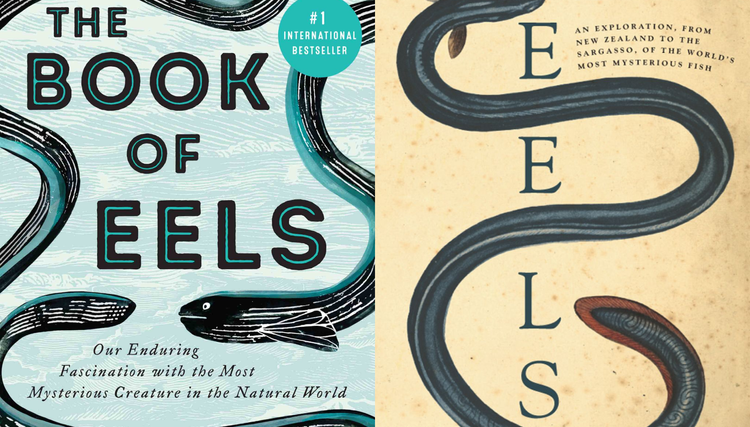
Running Commentary 12/4/2023
Hello,
Since I last published A Running Commentary, I heard the sad news of the passing of Marc Thorpe. That name might not mean anything to you immediately, but Thorpe had a hand in two big things I cover in this newsletter: at ILM he did special effects work for the Star Wars Original Trilogy, and later he developed what would eventually become BattleBots. A Running Commentary got rolling covering The Mandalorian and BattleBots in my first three months, and without the things Thorpe worked on, the newsletter probably wouldn't exist.
Anyway...
Reading...

Fuzz by Mary Roach
You know, it was just a matter of time before I read a Mary Roach book. If you read a lot of weird nonfiction books, you'll quickly find her work being recommended. She's known for tackling off-beat subjects in an especially humorous, entertaining way. That is very much the case in Fuzz: When Nature Breaks the Law. The title conjures images of police raiding a woodland glen, tossing delinquent squirrels and deer in the back of a squad car and running them back downtown. It's a funny image, and it's only really half-absurd. The book starts out looking at how the police handle things when it's determined that a homicide victim was slain by a mountain lion. It doesn't go on quite as morbidly the whole way through, but that's a good way to establish what the book is: a look at the ways the other living things on this planet disrupt human society, and how human society responds.
From killing cougars Roach moves on to thieving monkeys, jaywalking camels, and weasels that kill protected endangered birds. Plants don't get off either, as she looks at huge trees that kill hikers when their limbs break off and fall the hundreds of feet to the ground, and at the many houseplants that produce deadly poisons. (The plants are entirely legal to own, but someone buying large quantities of rosary peas might draw a second glance from the FBI.) And, of course, no book about conflicts between human governments and nature would be complete without an account of teh Australian/Emu War of 1932.
But the book isn't just a series of wacky stories; it's an examination of how much we exist in conflict with nature, raising questions of how much we need to. There's honestly a lot of parallel between the concerns regarding how governments address natural challenges and how they address human troubles, including how "can't we all just get along" is an incomplete answer. I can see why Roach is such a beloved author. I rate Fuzz 8/10.
Playing...
Warframe
DevStream 175 gave us a look at this month's update, which will bring the start of the Albrecht Entrati lab stuff, a new warframe, and full cross-platform integration. Here are my notes:
- One of the first things they mentioned is already here: a PvP snowball fight event. It's...not terrible. Conclave is bad because the whole gameplay of Warframe combat is geared toward moving fast and fighting crowds of slow-moving enemies, except Conclave, which has fast-moving enemies which might have better gear than you. The snowball fight at least levels the playing field, gear-wise. The main issue is that the rewards are just glyphs and sigils, apparently, which aren't worth the effort to me or most people.
- The suggestion to allow new players to pay-to-skip earlier quests to get to new content immediately is not going forward. Instead, quest progression is getting decoupled from master rank progression, and a new player will have the option to buy an initiate pack with enough stuff that leveling all of it will get them to MR 5 real quick, so that they can play sorties, etc. I think that it's a very good idea not to let people skip the story, since, y'know, the story is largely linear and later quests depend on knowing what happened in earlier quests to make sense. But, at this point, I can also see the need to get a new player up to speed in less than a week's time.
- Next Prime is Gauss, which the devs acted as if was a spoiler but which could be pretty well guessed.
- We heard relatively little about the next update, beyond what we heard at TennoCon. We did see the next warframe, Qorvex, a sort of nuclear-plant/concrete/accordion-themed 'frame. He honestly looks pretty cool. His powers seem very focused on what Warframe wants right now: dealing status procs, AoE damage, and status immunity for players. He also looks pretty cool in a literal looks sense, although I happen to know that visible nuclear radiation is blue, not red, so I'll have to fix that on mine.
- There's a melee rework of sorts coming in the form of something called "Tenno-kai", which pretty much seems to be a way to make heavy attacks without consuming combo counter. Looks potentially good, but it also looked somewhat inconsistent to trigger in the demo.
- It looks like the update will feature several new game modes.
- If DE ever really runs out of ideas, it looks like they might make a pregnancy-themed warframe.
Besides Grendel. - We'll be able to mix the normal primary-colored archon shards to make secondary-colored archon shards with some as-yet unspecified "weird effects".
- Warframe for Android is in the works. I'm confirmed for interested in DE's systems to maybe try out the closed beta. If I get into that, I'll let you know what I can. iOS will be coming first next year, but hopefully Android will be coming shortly after.
- Cross-save is coming soon. That doesn't affect me much since I don't have any game consoles, but that's the last piece to the merging of the different platforms that many people will be very excited for.

Bird of the Week
Once again, for Thanksgiving, I've drawn one of the turkey's international cousins. After two years of proper pheasants, this year we have a grouse. Grouse are some of the most turkey-like of non-turkeys, given their stout bodies, muted colors, and fan-shaped tails. The largest of the grouse has all three plus one of the most fantastically Scottish names of any bird: the Western Capercaillie.
Capercaillies (of which there are two: this, the western, of northern Europe and Russia, and the black-billed, of far eastern Russia and northeastern China) are marked by extreme sexual dimorphism of mass, with females averaging a weight of four-and-a-half pounds, and males averaging nearly nine pounds; male capercaillies are among the largest of the phasinids, with only the turkey and the peafowl being much larger. They are found in coniferous forests. Their name, owing to their large size and arboreal nature, means "horse-of-the-woods".1
In Swedish, they are called "tjäder" (pronounced "shedder")3, from which derives the word "tjäderlek", from which the English loanword "lek" is borrowed. Lekking occurs when many species, but the name comes from Swedish observation of capercaillies and their smaller cousins, the black grouse, during the mating season. Lekking is a phenomenon in which the local male population of a species will gather to perform some sort of feats (in the case of capercaillies, posing, strutting, and making loud clicking sounds)4 before an audience of the local females, with the winner being awarded mating priority.5 In Swedish, "lek" is the word for "play", especially the open-ended play of children, who also like to gather in fields, run around, and make noise. As an aside, the Danish form of the same word is "leg", which is the root of the name of Danish toymaker Lego.6 The tjäderlek is a prized even for Nordic birders7, though in Scotland, where the bird is rarer and more vulnerable to habitat loss, disturbing the lek is prohibited and thus even trying to witness it is generally discouraged.8
As I mentioned, "capercaillie" is Scottish in origin, an anglicization of "capalcollie", Gaelic for "horse-of-the-woods".1 They are sometimes also called "wood grouse" or "cocks-of-the-woods" (not to be confused with woodcocks, whic hare an entirely different sort of bird). To science, they are Tetrao urogallus. The genus name is a Latin word that referred to both capercaillies and black grouse, though only capercaillies belong to the genus. Now what the species name means is less simple; apparently, Linnaeus partially translated the German name for the bird, "auerhuhn", into Latin. "Huhn" is German for "hen", which, in Latin, is "gallus". "Auer-" is a prefix that, as far as I can tell, denotes exclusion in some way, though I'm without an answer as to why Germans consider the capercaillie an excluded hen. The "uro-" in the name apparently was chosen to sound like "Auer-", which Linnaeus seems to have had similar difficulty translating from German.9 Linnaeus himself was Swedish, so I'm not sure why he didn't try to convert "tjäder" to Latin. There's a lot of mysteries about the name urogallus.
- Merriam-Webster.com Dictionary, s.v. “capercaillie,” accessed December 2, 2023, https://www.merriam-webster.com/dictionary/capercaillie.
- Jägareförbundet, S. (n.d.). Tjäder. jagareforbundet.se. https://jagareforbundet.se/vilt/vilt-vetande2/artpresentation/faglar/tjader/
- Campbell, M. (n.d.). Meaning, origin and history of the surname Tjäder. Behind the Name. https://surnames.behindthename.com/name/tja12der
- Naesje, Per. "ML201047291 - Western Capercaillie". Macaulay Library. (2008, May 5). https://macaulaylibrary.org/asset/201047291
- Bartels, M. (2023, August 7). "What the heck is a LEK? The quirkiest mating party on Earth". Audubon. https://www.audubon.org/news/what-heck-lek-quirkiest-mating-party-earth
- "leikr". - Wiktionary, the free dictionary. (n.d.). https://en.wiktionary.org/wiki/leikr#Old_Norse
- “Capercaillie Lek” Nordic Safari Sweden, n.d., https://www.nordicsafarisweden.com/capercallielek.
- BBC News (2023, MaRCH 31). "Cairngorms tourists urged not to seek out rare capercaillie" https://www.bbc.com/news/articles/cv2q4ver73go
- Jobling, J. A. (editor). The Key to Scientific Names in Birds of the World (S. M. Billerman et al. editors), Cornell Laboratory of Ornithology, Ithaca.
Curation Links
A Pictorial History of Santa Claus | The Public Domain Review
“Contrary to what many believe, Santa Claus as we know him today - sleigh riding, gift-giving, rotund and white bearded with his distinctive red suit trimmed with white fur - was not the creation of the Coca Cola Company. Although their Christmas advertising campaigns of the 1930s and 40s were key to popularising the image, Santa can be seen in his modern form decades before Coca Cola's illustrator Haddon Sundblom got to work. Prior to settling on his famed red garb and jolly bearded countenance, throughout the latter half of the 19th century, Santa morphed through a variety of different looks. From the description given in Clement Moore's A Visit from St Nicholas in 1822, through the vision of artist Thomas Nast, and later Norman Rockwell, Mr Claus gradually shed his various guises and became the jolly red-suited Santa we know today. Below we've put together a little pictorial guide showing his evolvement through the ages.”
2023 Gallery, Wildlife Photographer of the Year | Natural History Museum
Shortlist for a photo contest held by the British Natural History Museum. A decent number of photos are of birds, of course.
The Asbestos Times | Mano Majumdar, Works in Progress
“Few materials fell from grace like asbestos. Once cherished as an almost-magical material, it is now the archetypal carcinogen. We spent over a century integrating it into buildings, wiring, pipes, brake pads, and more, and we now spend billions of dollars a year removing it. But the standard story of asbestos as a mistake – or even a crime – of massive proportions does not do justice to the real benefits it brought. Asbestos was central to mitigating urban fires, which cost thousands of lives each year as modern cities grew larger, denser, and more flammable. But as we learned to control urban fires without it, asbestos’s health costs seemed less and less worth bearing. Asbestos is in its final days and soon the material will almost disappear entirely.”
Nightglow Pizza | A. M. Lomuscio, Apex Magazine
"By every measure of life, CX2389 should be dead. Its star was more ash than fire. But, just as Fara had found on other worlds, life can thrive in the strangest of places. That was her secret. Fara was never afraid to try a new ingredient. So far, her gambles had proven delicious … and mostly harmless."
See the full archive of curations on Notion






Member Commentary